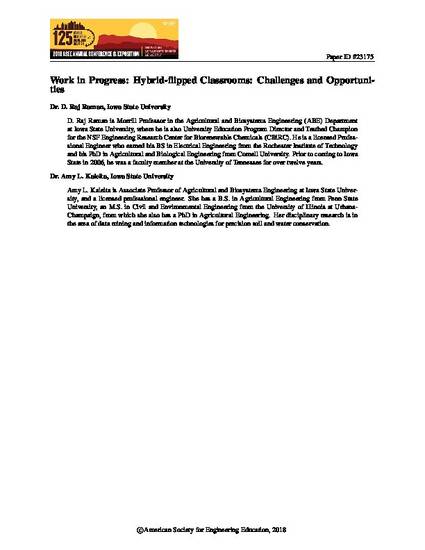
In the 2013-14 academic year, we embarked on an effort to flip two engineering courses in our department – a year-1 problem solving and programming course (Y1PS), and a year-3 numerical methods course (Y3NM). Initially, the Y3NM course, which we were also teaching for the first time and revising significantly as we did, was conducted in a standard flipped model wherein students viewed video lectures and took diagnostic quizzes prior to attending class, and where class time itself focused on discussion and problem solving. In contrast, based on our significant prior experiences teaching the Y1PS course, and upon its organization as a mixed-mode lecture/problems solving course, we did not take a standard flipped approach to it. Instead, in the Y1PS course, students watched videos during the class periods themselves; such a structure was facilitated by the classroom having one computer per student, to accommodate the programming portion of the class. We refer to this “watch in class” model as a hybrid-flipped classroom, and have found this approach to work significantly better in terms of student engagement and learning than the standard flipped model did for us. With that experience, we modified the Y3NM class to the hybrid-flipped model in subsequent offerings. We recognize that the hybrid-flipped model is resource intensive because it requires far more classroom technology than traditional lecture, and also that our positive results are in part due to the computer-intensive nature of both courses in which we have implemented this model. We report here about our experiences, both positive and negative, with flipped and hybrid-flipped approaches, and provide guidance for instructors considering such changes themselves.
Available at: http://works.bepress.com/amy_kaleita/82/

This proceeding is published as Raman, D. Raj, and Amy L. Kaleita. "Work in Progress: Hybrid-flipped Classrooms: Challenges and Opportunities." Paper ID #23175. In 2018 ASEE Annual Conference & Exposition. DOI: 10.18260/1-2--31289. Posted with permission.